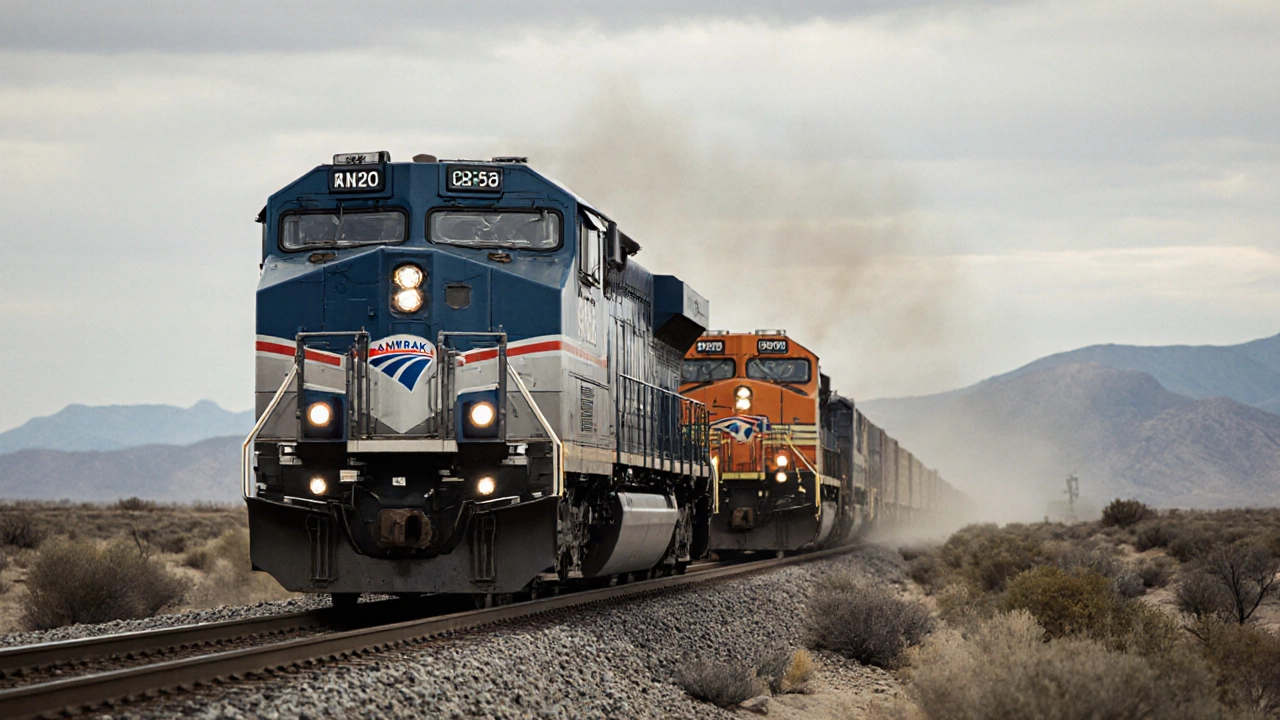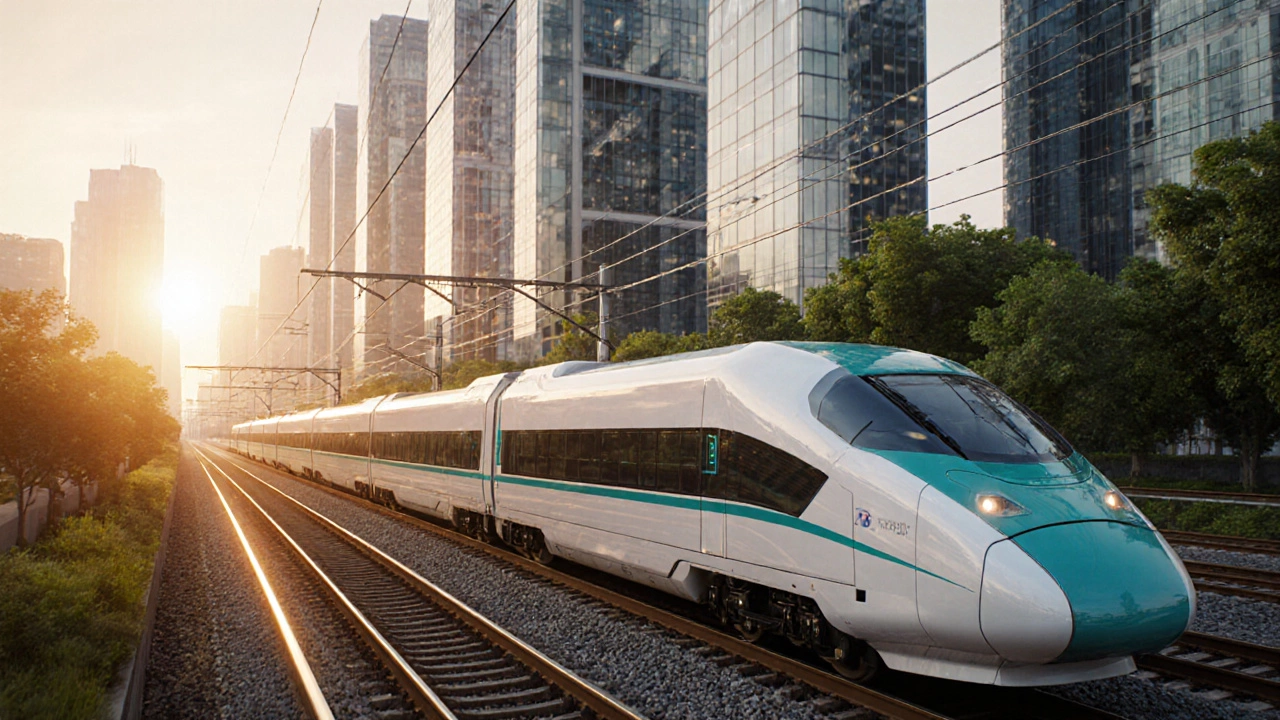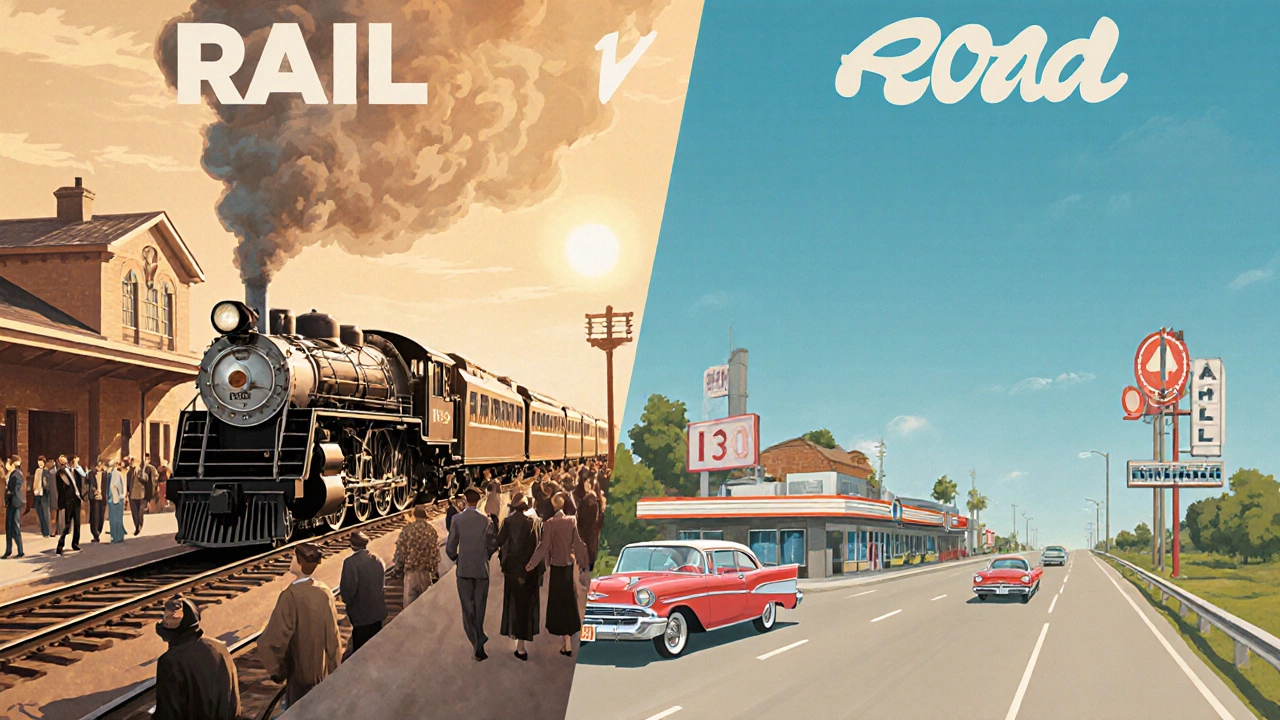US Travel Cost & Time Calculator
Calculate Your Next Trip
When you think of long distance trips across the US, the image that usually comes to mind is a road trip or a cheap flight, not a train. Train travel in the United States is a passenger rail system that covers about 30,000 miles of track, primarily operated by Amtrak and a handful of regional carriers. It carries roughly 30 million riders a year - a fraction of the 260million who drive and the 1billion who fly domestically. Understanding why the numbers look that way requires digging into history, money, culture, and policy.
Historical roots and the rise of the automobile
In the early 20thcentury, trains were the backbone of American mobility. The Pennsylvania Railroad once offered a coast‑to‑coast service that took 72hours. But the post‑World‑WarII boom brought highways, cheap cars, and the interstate system. The Federal‑Aid Highway Act of 1956 poured $25billion into roads, while passenger rail was left to private companies that were already struggling against freight‑centric business models.
Infrastructure and funding gaps
Unlike Europe or Japan, the US never built a dense passenger‑rail network. Today, Freight railroads own about 70percent of the nation’s track mileage and prioritize cargo over people. Amtrak, the only true national passenger carrier, operates on tracks owned by freight companies, which leads to scheduling delays and higher maintenance costs.
The funding picture is equally stark. Federal subsidies for Amtrak total about $2billion annually, roughly 15percent of its operating budget. By comparison, the Department of Transportation allocated $120billion for highway projects in 2024. The mismatch means rail upgrades compete for a tiny slice of a massive pie.
Cultural love for the car
America’s car culture isn’t just a habit; it’s an identity. Owning a vehicle symbolizes freedom, especially in sprawling suburbs where public transit is scarce. A 2023 survey by the Pew Research Center found that 81percent of US adults consider a personal car essential, versus 42percent who view train travel as a luxury.
Because most jobs, schools, and shopping centers are designed around parking lots, the perceived convenience of driving outweighs the potential comfort of a train ride. Even in cities with decent rail options, many people still prefer the door‑to‑door experience of a car.
Air travel’s speed advantage
When distance matters, planes win hands down. A flight from NewYork to LosAngeles takes about 6hours total, while the longest Amtrak route, the California Zephyr, takes 52hours. The time‑savings translate into a strong business case for air travel, especially for time‑pressed travelers.
Low‑cost carriers have expanded dramatically, offering sub‑$100 tickets on many routes. That price pressure makes it hard for rail to compete unless it offers a truly differentiated experience.

Policy, regulation, and the high‑speed rail debate
High‑speed rail (HSR) sounds like a perfect solution, but the US has only a handful of projects, most of which are stuck in planning. The Federal Railroad Administration oversees safety standards that add cost and complexity to new rail builds. Meanwhile, state governments often lack the political will or financing mechanisms to launch multi‑billion‑dollar HSR lines.
California’s High‑Speed Rail Authority has spent over $20billion on a line that still has no completed tracks. The delays and overruns discourage investors and reinforce the notion that rail is a risky venture.
The niche of luxury train journeys
Even though everyday train travel is limited, there’s a small but growing market for premium experiences. Brands like Amtrak’s Empire Builder offers sleeper cabins, gourmet meals, and scenic routes through the Rockies attract tourists willing to pay $300‑$800 per night.
These luxury journeys showcase what rail could be: spacious, scenic, and socially engaging. Yet they remain a niche because the underlying network still suffers from speed, reliability, and coverage issues.
Future prospects and what could change
Several developments hint at a possible shift. The 2024 Infrastructure Investment and Jobs Act earmarked $66billion for rail, including upgrades to existing corridors and new HSR feasibility studies in Texas, the Southeast, and the Midwest.
Public‑private partnerships are also emerging. A 2025 proposal by a coalition of tech investors aims to fund a high‑speed link between Chicago and Detroit, promising 90mph service. If successful, it could serve as a pilot that demonstrates rail’s viability.
Environmental concerns are adding pressure, too. The EPA’s 2023 report shows that passenger rail emits 76percent less CO₂ per passenger‑mile than cars. Cities like Portland and Seattle are using that data to lobby for more commuter rail funding.

Quick checklist for evaluating US train travel
- Check the route: Amtrak’s California Zephyr, Empire Builder, and Acela Express are the most scenic or fastest options.
- Compare cost per mile: Trains often cost $0.15‑$0.30 per mile, while budget airlines can be lower for long distances.
- Assess time: Add station wait times; rail is usually slower than air for coast‑to‑coast trips.
- Think about comfort: Sleeper cabins and dining cars can make long trips enjoyable.
- Consider the carbon foot‑print: Rail is the greener choice for most distances.
Comparison of major US travel modes
| Mode | Avg Speed (mph) | Cost per Mile (USD) | CO₂ per Passenger‑Mile (g) | Popularity Index (0‑100) |
|---|---|---|---|---|
| Passenger Rail (Amtrak) | 45 | 0.22 | 70 | 28 |
| Personal Car | 55 | 0.18 | 250 | 81 |
| Domestic Flight | 500 (including airport time) | 0.30 | 180 | 70 |
Frequently Asked Questions
Why does Amtrak run on freight tracks?
When passenger rail was privatized in the 1970s, most rail lines were already owned by freight companies. The government created Amtrak but didn’t buy the tracks, so it had to negotiate usage rights, which often puts passenger trains in lower priority.
Is high‑speed rail possible in the US?
Technically yes. The technology exists and several corridors (e.g., Dallas‑Houston) have been studied. The biggest hurdles are funding, land acquisition, and political consensus.
How does train travel compare environmentally to flying?
Passenger rail emits roughly half the CO₂ of a comparable flight per passenger‑mile. For long trips, the gap widens because planes burn more fuel during takeoff and climb.
Are there any luxury train trips worth taking?
Yes. The Amtrak Empire Builder, Rocky Mountaineer (operates in the US‑Canada border region), and the private American Orient Express offer upscale cabins, fine dining, and curated itineraries that turn the journey itself into a vacation.
Will the 2024 Infrastructure Bill improve train travel?
The bill allocates $66billion for rail projects, which will fund track upgrades, signal modernization, and a few high‑speed studies. It’s a step forward, but full transformation will take decades.
